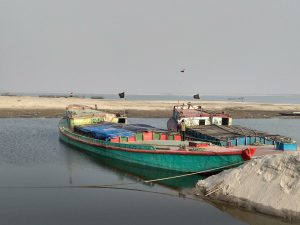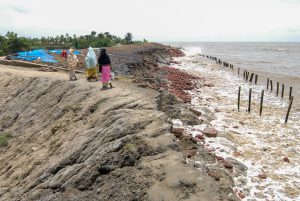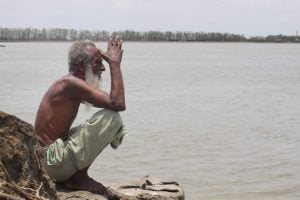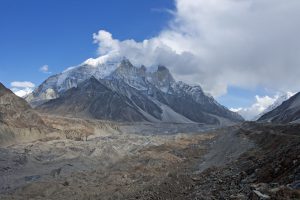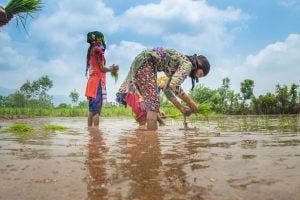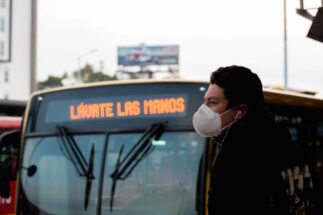A gas well blew out in the north-east Indian state of Assam on May 27, spewing crude and gas over villages, a wetland and a protected forest. Then the whole thing caught fire, which is still burning two weeks later. The Pollution Control Board of Assam (PCBA) ordered well-owner Oil India Limited (OIL) to close down production and drilling on June 19, only to withdraw the order on June 22.
See: Gas well blows out in Assam
See: Blown-out gas well in Assam bursts into flames
Local residents – from among 2,500 people evacuated since the initial blowout – are protesting the drilling operations. The disaster has caused huge damage in the Dibru Saikhowa national park and the Maguri-Motapung wetland, killing birds and endangered wildlife. Houses, farms, trees and water are covered with a film of oil, right next to the place where three rivers join to form the transboundary Brahmaputra river. The whole area is experiencing repeated seismic tremors.
After the spewing well in Baghjan village caught fire on June 9, residents started wondering when they can go home. They currently are forced to huddle in relief centres too overcrowded to maintain distance norms that are supposedly mandatory during the Covid-19 pandemic.
Different priorities
Dharmendra Pradhan, India’s minister for petroleum and natural gas, accompanied Assam chief minister Sarbananda Sonowal to the area on June 14. Pradhan promised “adequate” compensation, Sonowal announced an inquiry and promised to set up a civil hospital and a veterinary hospital in the area. Neither said anything about halting drilling, the main demand of the residents.
Instead, on June 22, Indian government-owned OIL stated that its operations had been disrupted in 22 oil wells and one gas well by protests: “Cumulative production loss since May 27 due to bandhs (strikes) and blockades 8,162 million tonnes of crude oil, 10.4 million metric standard cubic metres of natural gas.” The blockades are being carried out by local residents, who want OIL to stop drilling in the area.
According to an OIL spokesperson, since 2003 they have drilled 23 wells at Baghjan.
In 2016, OIL extended its drilling and testing to seven new locations inside Dibru-Saikhowa national park. It bypassed the rule that requires public hearings for such operations inside protected forests by asking India’s environment ministry to take into account hearings that had occurred on July 8 and August 26, 2011.
This April, OIL received environment clearance for its INR 10.67 billion (USD 141 million) proposal to have 16 wells and four production installations at Mechaki, on the other bank of the Brahmaputra. It was among the many clearances given by India’s environment ministry during the India-wide lockdown forced by the Covid-19 pandemic.
It also plans 179 wells and production installations with an investment of INR 35 billion (USD 462.75 million) in nearby North Hapjan, Tinsukia and Dhola and has sought clearance from the environment ministry.
Questions and studies
The plans remain on the table, while the well in Baghjan burns bright. OIL and the petroleum ministry have asked Gujarat-based drilling company John Energy Ltd for a report on what caused the blowout in the well. “It seems there might be a fault in maintaining standard operating procedure,” said an ex-OIL worker, speaking on the condition of anonymity. Experts from around India and from Singapore are still trying to put out the blaze that has already killed two firefighters.
In July 2018, a parliamentary standing committee looking at oil fields around India had said, “The major cause of mishaps is not following standard operating systems, violations of work permit system, and knowledge gaps.”
In its short-lived ban order, the PCBA had referred to the destruction and damage to human lives and property, as well the Dibru Saikhowa national park and the Maguri-Motapung wetland, home to large numbers of migratory birds and rare wildlife. A film of oil covers much of the wetland now, where an endangered Gangetic dolphin was found dead after the initial blowout.
The June 19 ban order read, “Baghjan oil field is located just 500 metres to [sic] the Maguri Motapung wetland which is part of eco-sensitive zone of Dibru Saikhowa national park, which is effected severely due to the negligence from your end… You are destroying the aquatic life… in the name of exploring oil without any mitigation measures.”
When lifting the ban on June 22, PCBA said it had done so on the basis of an affidavit from OIL that the company would “submit a detailed timebound environmental management plan within 15 days”. It also said the company would now have to apply for consent to operate for each installation and submit detailed plans for handling hazardous waste.
OIL said on June 22 it has asked a company called ERM to assess the environmental impact of the blowout and the blaze; New Delhi-based The Energy Research Institute (TERI) to study air quality, noise level and bioremediation of sludge; and two government laboratories – North East Institute of Science and Technology and National Geophysical Research Institute – to monitor the tremors and carry out a seismological survey.
The evacuated
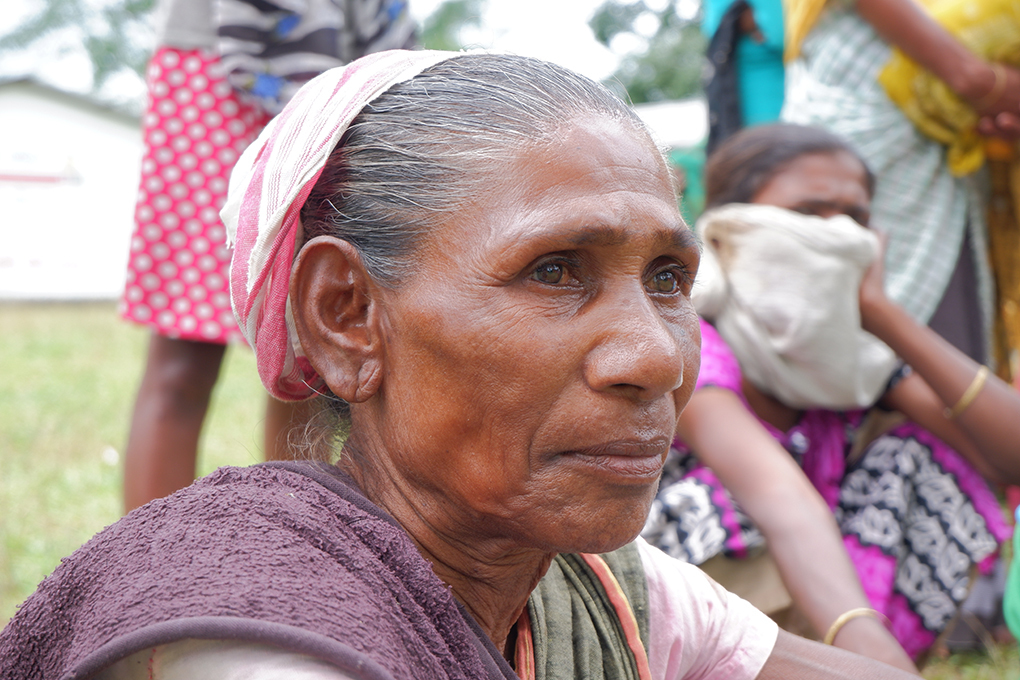
Some villagers return during the day to see to their homes. Labanya Moran, 47, found her windowpane and floor cracked. Covered with oil, the crop in the family’s small tea garden is a write-off.
Recalling the May 27 blowout that forced her to run from her house despite a damaged leg, Moran said she has “never seen anything like this”. The family has been in a relief camp since then, but the “attachment to the house brings me here every morning. I don’t know when this will end.”
Diganta Moran, another Baghjan resident, said, “After the second blast [on June 9], we’re scared. We’re feeling continuous tremors from the ground. It’s difficult to breathe and sleep.” Breathing problems have become common, especially among the elderly.
It is even more difficult for some. Kali Murmu, who works in a tea garden, said, “We are temporary workers. Now the gardens are closed we’re not getting our daily wages. I don’t know if we will ever get any compensation.”
Local authorities are distributing food and other essential items in the camps. OIL said in its June 22 statement, “Survey for assessment of damage for compensation by the committee constituted by district administration is underway.”
Correction: An earlier version of this article said an oil well had exploded instead of a gas well. This was corrected on July 2. The Third Pole regrets the error
![<p>The blaze at the Baghjan gas well, still out of control [image by: Chandrani Sinha]</p>](https://dialogue.earth/content/uploads/2020/06/oil_well_followup_story_featured_image_credit_chandrani.jpg)

